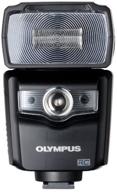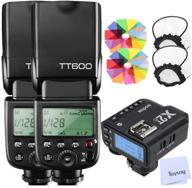
Review on Nikon SB-800 AF Speedlight for Nikon DSLRs - Old Version: Enhanced Flash Photography for your Camera by Vashod Reed

Preview: Almost all functions possible
Nikon developed this device to take advantage of their latest DSLRs while being compatible with their older F-series cameras.The SB-800 is more expensive than the SB -600, but gives more control and more light. You may find that more light is crucial when you want to use bounce flash to soften shadows. I would give the SB-800 five stars if the manual was a bit better. Nikon has obviously put a lot of effort into providing good documentation and making the user interface as intuitive as possible. But a device with so many features and modes will inevitably struggle to learn and present instances where you're working against the built-in automation. If you really want to learn how to use this device, you must expect a lot of experimental recordings. My main request to Nikon would be to explain more directly that cameras like the D50 DO NOT have TTL FLASH. Called i-TTL, it uses pre-flashes and calculations to set up a calculated flash, rather than real-time metering during exposure to quench the flash. You can usually expect the same result, but not when using a remote flash. However, one of the beauties of the SB-800 is that it can be used as a slave flash, using its own sensor to determine when the master flash fires, even when (as is the case with the D50 with its built-in flash). ), the camera and SB-800 do not transmit i-TTL information via IR pulses.
- Certified
- Cable is shorter than other models












